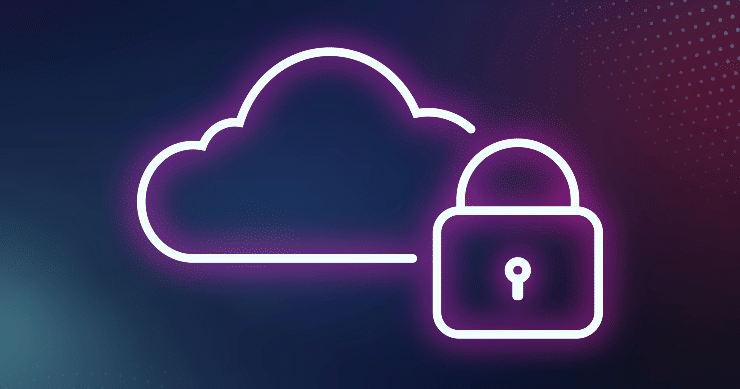In the era of big data, companies generate and store vast amounts of information. This data takes many forms, ranging from highly confidential data to less sensitive analytics. Cloud services offer many advantages for data management, including scalability, cost efficiency, and enhanced collaboration. However, the shift to cloud computing requires rethinking traditional information security approaches as data moves around in a whole new environment.
Many organizations remain hesitant to migrate sensitive data to the cloud for a simple reason: They struggle to understand the security ramifications of doing so.
When it comes to ensuring the safety of your data in the cloud, the truth must be said: you can’t guarantee it 100%. But don’t worry; you can still take strong protective measures to keep your data as safe as possible. And remember that there were no guarantees before the advent of “The Cloud” either. So, while the risks are different now, the need for good security practices hasn’t changed.
Understanding how to secure cloud data remains one of the biggest obstacles to overcome as organizations transition from on-premises data centers to new, uncharted territory, also known as The Cloud.
- What is data security in the cloud?
- How can you keep your cloud data protected?
- What cloud data security best practices should you follow to ensure cloud-based data assets are secure and protected?
This blog will explore data security in cloud computing, along with the benefits and challenges that come along with it. And of course, we’ll try advising you (no promises!) on how to protect data in the cloud and in hybrid deployments.
.ai-rotate {position: relative;}
.ai-rotate-hidden {visibility: hidden;}
.ai-rotate-hidden-2 {position: absolute; top: 0; left: 0; width: 100%; height: 100%;}
.ai-list-data, .ai-ip-data, .ai-filter-check, .ai-fallback, .ai-list-block, .ai-list-block-ip, .ai-list-block-filter {visibility: hidden; position: absolute; width: 50%; height: 1px; top: -1000px; z-index: -9999; margin: 0px!important;}
.ai-list-data, .ai-ip-data, .ai-filter-check, .ai-fallback {min-width: 1px;}
Why is Cloud Data Security Important?
Cloud data security refers to the technologies, policies, and processes designed to protect data stored in cloud environments from threats such as unauthorized access, data breaches, human error, and insider threats. Ensuring the confidentiality, integrity, and availability of data is paramount as organizations increasingly rely on cloud services for their operations.
According to a Forbes article, an estimated 60% of enterprise data stored in the cloud, understanding cloud computing data security is fundamental to mitigating data breach, reputation, financial, and compliance risks. Also Forbes quotes that 83% of CEOs want their organizations to be data-driven, and 74% of senior executives require data in decision-making processes. These statistics illustrate the growing importance of the CIA triad as it relates to cloud data security.
Benefits of Cloud Data Security
One of the primary benefits of data security in the cloud is enhanced data accessibility and collaboration. Cloud computing allows data to be accessed from any device with an internet connection, facilitating seamless collaboration across geographically dispersed teams. This capability is especially valuable for organizations with remote or hybrid workforces, enabling them to maintain productivity and efficiency. Additionally, cloud services offer scalability and agility, allowing organizations to adjust their resources based on demand.
Navigating Cloud Security Challenges
As businesses continue their digital transformation, leveraging cloud technology offers unparalleled advantages. However, this shift also presents unique security challenges that require a nuanced understanding and strategic approach. Here’s an insightful look into the key cloud security challenges.
Visibility and Management Challenges
Achieving Full Visibility in Cloud Environments
Maintaining comprehensive visibility across cloud environments has become increasingly challenging with the proliferation of cloud services and architectures. Organizations often deploy a mix of infrastructure as a service (IaaS), platform as a service (PaaS), and software as a service (SaaS) solutions, leading to a complex web of interconnected systems. Hybrid and multi-cloud deployments further exacerbate this complexity by introducing additional layers of abstraction and diversity.
Streamlining Multi-Cloud Security Management
Managing security across multiple cloud platforms presents its own set of challenges, as each platform typically has its own unique configurations, security protocols, and management interfaces. This diversity can complicate the implementation of consistent security policies and the enforcement of compliance standards. Furthermore, the need to coordinate security measures across different cloud providers adds complexity to incident response and threat detection efforts. Without streamlined security management processes, organizations may struggle to maintain a cohesive security posture and effectively protect their assets across diverse cloud environments.
Security Risks and Threat Challenges
Securing Third-Party Integrations and APIs
Integrating third-party software and APIs is essential for extending the functionality and capabilities of cloud-based systems. However, these integrations introduce potential security vulnerabilities, as APIs with excessive permissions or inadequate security controls can become entry points for attackers. Ensuring the security of third-party integrations requires rigorous vetting of vendors, implementation of secure coding practices, and ongoing monitoring and testing of APIs for vulnerabilities and compliance with security standards.
Mitigating Shadow IT Risks
Shadow IT, where employees use unauthorized cloud services without the knowledge or approval of IT departments, poses a significant security risk for organizations. These unsanctioned cloud applications and services often lack adequate security controls, leading to potential data leaks, compliance violations, and increased exposure to cyber threats.
Unmanaged Attack Surface
The widespread adoption of microservices and serverless architectures has led to an explosion of publicly available workloads, increasing the overall attack surface for cloud environments. Each microservice or function represents a potential entry point for attackers, who may exploit vulnerabilities in one component to gain access to sensitive data or disrupt critical operations.
Human Error and Misconfiguration Challenges
Human Error
Human error remains a leading cause of security incidents in cloud environments, often resulting from misconfigurations, insecure practices, or lack of awareness about security best practices. Employees may inadvertently expose sensitive data, misconfigure access controls, or fall victim to social engineering attacks, leading to data breaches, compliance violations, and operational disruptions.
Misconfiguration
Misconfigurations are a pervasive problem in cloud environments, stemming from the complex and varied default settings across different cloud providers. Organizations often struggle to maintain consistent security configurations across their cloud infrastructure, leading to gaps in security coverage and increased exposure to cyber threats.
Data Security and Compliance Challenges
Ensuring Robust Data Governance
Managing data security and compliance in cloud environments involves navigating a complex landscape of regulations, industry standards, and data protection requirements. Organizations must ensure the confidentiality, integrity, and availability of their data while adhering to legal and regulatory mandates governing data privacy, security, and retention. Achieving robust data governance requires implementing encryption, access controls, and data classification policies, as well as regularly auditing and monitoring data usage to detect and mitigate security risks and compliance violations.
Data Loss Breaches
Data loss or data breaches occur when sensitive information is accessed without authorization, often due to weak security controls, misconfigurations, or insider threats. These breaches can have severe financial, legal, and reputational consequences for organizations, leading to loss of customer trust, regulatory fines, and litigation.
Cloud Compliance
Ensuring compliance with various regulations and standards in the cloud environment is a complex and ongoing challenge for organizations. Different industries and geographic regions have their own unique compliance requirements, spanning data protection, privacy, security, and auditing standards.
Identity and Access Management (IAM) Challenges
Identity and Access Management (IAM)
Effectively managing user identities and access permissions in a cloud environment is critical for maintaining security and compliance. Organizations must ensure that only authorized users have access to sensitive data and resources, while also enforcing least privilege principles to minimize the risk of insider threats or unauthorized access.
Proactive Strategies for Robust Cloud Data Security
Implementing best practices for cloud data security is crucial.
- Choose a Reliable Cloud Service Provider
Choosing a reliable cloud service provider is the first step toward securing data. A reputable provider will offer secure cloud data storage, robust encryption methods, and stringent access controls. It is essential to select providers compliant with relevant security standards and regulations such as ISO 27001, HIPAA, and PCI DSS.
- Understand Your End of Security Responsibilities
When you move your data to cloud services, it’s important to understand who is responsible for securing it. Generally, the cloud provider is responsible for securing the infrastructure, while the customer must secure the data stored on that infrastructure. Recognizing this shared responsibility is crucial. While cloud providers handle tasks like maintaining physical security and managing hardware, customers need to focus on securing their data, devices, and user identities.
- Use Strong Authentication
Passwords are the first line of defense against unauthorized access, but they can be easily compromised. Using strong authentication methods, such as multifactor authentication (MFA), can significantly reduce the risk of unauthorized access to data. MFA requires users to provide multiple forms of authentication, such as a password and a code sent to a mobile app, before gaining access to the cloud environment.
- Implement Encryption
Encryption is a critical component of cloud security. It involves encoding data in such a way that only authorized users can access it. Implementing encryption for data in transit and at rest helps protect sensitive information from unauthorized access and data breaches.
- Protect Data Wherever It Resides or Travels
Discovering where sensitive data resides is one of the biggest challenges businesses face today. With over 80 percent of corporate data being “dark”, organizations need tools to locate this data. Simply identifying the data is not enough; organizations must also understand the risks associated with it and apply measures like encryption, access restrictions, and visual markings.
- Implement Access Control
Implementing access controls is crucial to limit access to sensitive data in cloud services. Access controls should follow the principle of least privilege, where users are granted the minimum access necessary to perform their tasks. Role-based access control (RBAC) is a method to assign roles and permissions to users based on their job responsibilities, ensuring that sensitive data is only accessible to those who truly need it.
- Use Secure APIs
APIs are essential for accessing cloud services, but they can be vulnerable to attacks if not properly secured. Implementing secure APIs involves using strong authentication and encryption to prevent unauthorized access. Ensuring that your APIs are secure helps protect data and maintain the integrity of your cloud services.
- Conduct Regular Security Assessments
Regular security assessments are vital to identify security vulnerabilities and evaluate the effectiveness of security measures. These assessments can be conducted internally or by third-party security experts. Regular evaluations help keep security strategies up-to-date and ensure that any potential weaknesses are addressed promptly.
- Implement Principles of Zero Trust
Zero Trust is a comprehensive security strategy, not a product or service. It involves a set of principles designed to enhance security across an organization. Key principles include verifying explicitly, using least privilege access, and assuming breach. This approach ensures that all access requests are authenticated and authorized based on all available data points.
Last But Not Least: Training Time!
No security guide would be complete without putting employee training on the list (groan…).
Yes, we know it will cause an eyeroll (or two). But think about it: even the most advanced security measures can fall flat if your employees aren’t on board. After all, they’re the ones clicking on suspicious links, sharing passwords, and leaving their laptops unattended in coffee shops. Regular cloud data security program training ensures that employees understand the security risks associated with cloud data storage and are familiar with best practices for securing data.
The post Maximizing Cloud Data Security: Importance, Challenges and Best Practices appeared first on Centraleyes.
*** This is a Security Bloggers Network syndicated blog from Centraleyes authored by Rebecca Kappel. Read the original post at: https://www.centraleyes.com/maximizing-cloud-data-security/
This post was originally published on the 3rd party site mentioned in the title of this this site






